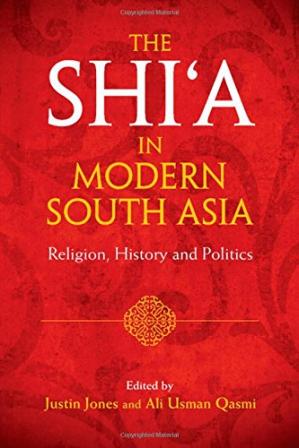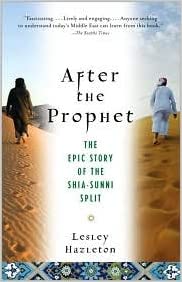
18 years old Junaid Mahadi ,who was gunned down by the ASWJ’s armed men in the rally
Introduction
The ongoing violence against Shia Muslims in Pakistan has reached alarming levels, particularly in cities like Karachi and Mianwali. Despite being officially banned, extremist groups such as Ahl-e-Sunnat Wal Jamaat (ASWJ) continue to operate openly, spreading hate and committing violent acts against the Shia community. Recent attacks in Karachi and Mianwali highlight the urgent need to address this escalating sectarian violence, which threatens not only the safety of Shia Muslims but also the broader stability of Pakistan.
1. Overview of Sectarian Violence in Pakistan
Shia Muslims in Pakistan have long been targets of sectarian violence. Extremist groups like ASWJ, despite being banned, remain active and influential, particularly in spreading anti-Shia propaganda. This ongoing violence is not just a series of isolated incidents but part of a broader, systematic effort to marginalize and terrorize the Shia community. The state’s failure to effectively curb these groups’ activities underscores the deep-seated issues within Pakistan’s governance and law enforcement.
2. ASWJ’s Role in Sectarian Attacks
The Ahl-e-Sunnat Wal Jamaat (ASWJ) has a notorious reputation for inciting violence against Shia Muslims. Officially banned by the Pakistani government, ASWJ continues to operate under various aliases, orchestrating attacks and spreading sectarian hatred. The group’s involvement in recent attacks in Karachi and Mianwali is a stark reminder of the dangers posed by unchecked extremist ideologies and the urgent need for more robust measures to protect religious minorities.
3. Attack at Hyderi Mosque and Imambargah in Karachi
On the evening of August 25, 2024, Shia Muslims in Karachi’s Purana Golimar/Gulbahar Town area were observing the Chehlum of Imam Hussain when a rally organized by the banned ASWJ reached the Hyderi Mosque and Imambargah on Ali Basti Road. The rally, which included armed participants, began chanting inflammatory slogans and inciting violence against the Shia community. The situation escalated when some young Shia men responded by throwing stones, leading the rally participants to open fire. This attack resulted in the deaths of 25-year-old Junaid Mehdi and 18-year-old passerby Umair Sultan, while nine others were injured.
4. Media Manipulation and ASWJ’s False Claims
In the aftermath of the attack in Karachi, ASWJ leader Taj Hanfi Deobandi falsely claimed that the violence had been instigated by the Shia community, resulting in the deaths of two ASWJ workers. This narrative was quickly picked up by mainstream media, which framed the incident as a clash between two rival religious groups. This misrepresentation not only obscures the reality of the Shia persecution but also perpetuates the false equivalence between aggressors and victims, downplaying the severity of the attacks orchestrated by banned extremist groups like ASWJ.
The Central General Secretary of Jafria Organization Pakistan, Allama Syed Athar Hussain Jaffari, stated in a press conference that participants of a rally organized by the banned Ahle Sunnat Wal Jamaat/Sipah-e-Sahaba Pakistan opened fire on Imambargah Haidery while a women’s mourning assembly (Majlis-e-Aza) was taking place inside. Outside, only a few young men were present, who ran towards the alley to save their lives but were targeted, resulting in one young man succumbing to his injuries on the spot. Allama Athar Hussain Jaffari further said that the officials of the Sindh government and police, under the pressure of the banned organization, distorted the facts and falsely portrayed the attack on the women’s mourning assembly in the Imambargah as an attack on the rally of the banned organization. He condemned this act as an attempt to portray the attackers as victims.
5. The Mianwali Attack During Chehlum Procession

Ali S/O Abdullah and Daleel Abbas, son of Aqeel Abbas
On August 26, 2024, a day after the Karachi attack, Shia Muslims in Kalabagh Tehsil, Mianwali District, were commemorating the Chehlum of Imam Hussain when they were ambushed by militants from ASWJ. Positioned on rooftops and in shops, the militants first pelted stones at the mourners before opening fire. This brutal attack resulted in the deaths of two Shia mourners, Ali, son of Abdullah, and Daleel Abbas, son of Aqeel Abbas, while 30 others sustained injuries. The attack in Mianwali further underscores the relentless persecution that Shia Muslims face across Pakistan.
6. The Media’s Role in Sectarian Violence
Pakistan’s mainstream media played a significant role in misrepresenting the violence against Shia Muslims as mere clashes between rival groups. In both the Karachi and Mianwali incidents, media outlets failed to highlight the fact that ASWJ is a banned organization with a history of sectarian violence. By portraying these attacks as mutual conflicts rather than targeted aggression, the media effectively downplays the severity of the persecution faced by the Shia community and contributes to the perpetuation of sectarian violence.
7. The Broader Impact of Sectarian Violence in Pakistan
The continuous attacks on Shia Muslims in Pakistan have far-reaching consequences. Beyond the immediate loss of life and injury, these acts of violence deepen sectarian divisions and contribute to an atmosphere of fear and insecurity, particularly in areas with significant Shia populations. The unchecked activities of extremist groups like ASWJ exacerbate these tensions, leading to increased radicalization and further destabilization of Pakistan’s social fabric.
8. State Complicity and Failure to Protect Minorities
One of the most troubling aspects of the ongoing violence against Shia Muslims is the apparent complicity of the state. Despite being banned, ASWJ operates with considerable freedom, often with the tacit approval or outright support of certain state elements. This complicity, whether through direct action or inaction, highlights a significant failure of the state to uphold its duty to protect all citizens, particularly religious minorities who are most vulnerable to extremist violence.
9. International Human Rights Concerns
International human rights organizations have repeatedly called attention to the plight of Shia Muslims in Pakistan, urging the government to take stronger measures against extremist groups like ASWJ. Despite these calls, there has been little progress in curbing sectarian violence. The international community’s pressure on Pakistan to protect religious minorities must continue, with a focus on ensuring accountability for those who perpetrate or enable such violence.
10. Legal Reforms: A Path to Justice
To effectively address the persecution of Shia Muslims, Pakistan needs comprehensive legal reforms. This includes strict enforcement of bans on extremist organizations, protection for religious minorities, and robust legal mechanisms to hold perpetrators of sectarian violence accountable. Without these reforms, the cycle of violence will persist, endangering not only the Shia community but the stability of Pakistan as a whole.
11. The Role of Civil Society and Religious Leaders
Civil society organizations and religious leaders in Pakistan have a crucial role to play in combating sectarianism. By fostering dialogue, promoting tolerance, and advocating for the rights of religious minorities, these groups can help to challenge the narratives of hatred propagated by extremist organizations. Interfaith initiatives and community-based efforts are essential in building a more inclusive society that values diversity and respects religious freedoms.
12. The Importance of Education in Combating Extremism
Education is a key tool in the fight against sectarian violence. By promoting values of tolerance, respect, and understanding in schools and universities, Pakistan can begin to address the root causes of extremism. Educational curricula should include teachings on the importance of religious freedom and the dangers of sectarianism, helping to cultivate a generation of citizens who are committed to peace and coexistence.
13. Media Responsibility in Reporting Sectarian Violence
The media has a vital role in shaping public perceptions of sectarian violence. Accurate and unbiased reporting is essential in highlighting the true nature of attacks against Shia Muslims and exposing the activities of extremist groups like ASWJ. By providing clear and factual information, the media can help to raise awareness of the issues facing religious minorities and contribute to efforts to combat sectarianism.
More read on “media discourse on Shia-genocide in Pakistan” ;
Understanding Genocide: Is Shia Muslim community facing ‘Genocidal Campaign’? By Abbas Zaidi
14. Building Solidarity Across Religious Communities
Solidarity among Pakistan’s diverse religious communities is essential in the fight against extremism. Religious leaders, scholars, and community members must work together to resist the divisive tactics of groups like ASWJ. Through interfaith dialogues, joint initiatives, and public demonstrations of unity, Pakistan can build a stronger, more resilient society that stands against hate and violence.
15. Conclusion: Urgent Need for Action
The recent attacks on Shia Muslims in Karachi and Mianwali are stark reminders of the ongoing threat posed by sectarian violence in Pakistan. The government, civil society, and the international community must take urgent and decisive action to protect religious minorities and hold perpetrators accountable. Only through comprehensive legal reforms, education, and media responsibility can Pakistan hope to overcome the challenges of sectarianism and ensure a future of peace and security for all its citizens.
References:
https://mmnews.tv/two-killed-nine-injured-in-firing-at-religious-party-rally-in-karachi/
https://www.dawn.com/news/1855123/two-were-killed-over-30-injured-in-kalabagh-clash
https://gnnhd.tv/news/38813/two-killed-over-30-injured-in-kala-bagh-clash






